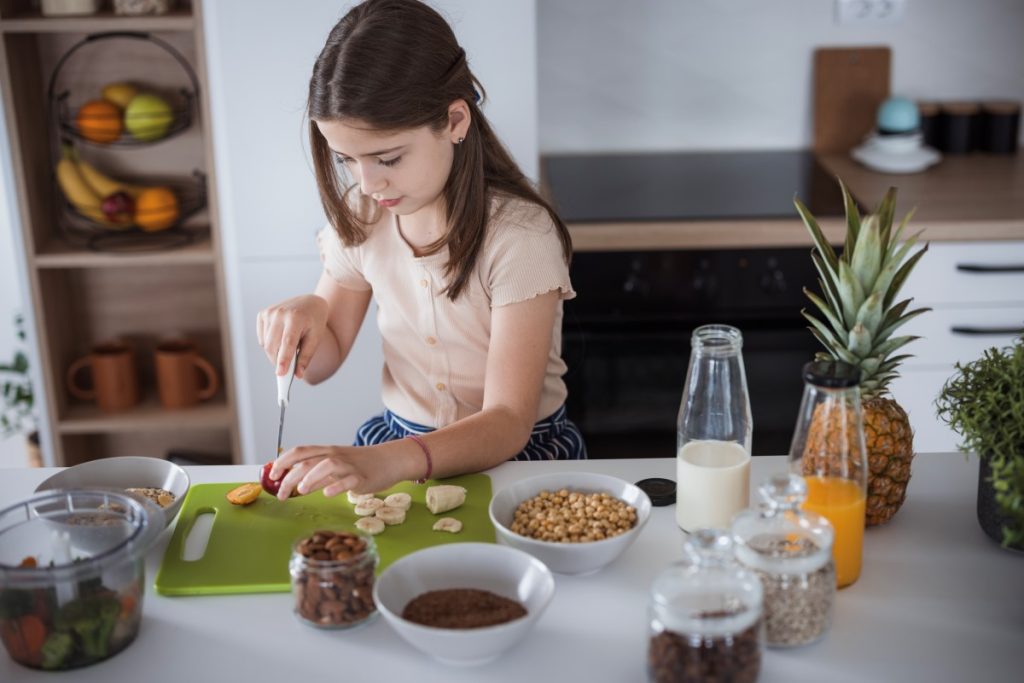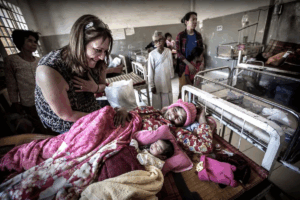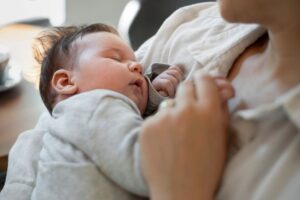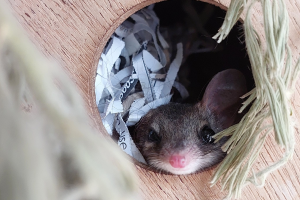WORDS: Kat Mason, Safe Sprouts
The kitchen can be a wonderful place for family bonding and teaching kids valuable life skills, but it also poses many potential hazards for our youngest members. By incorporating some simple safety practices and being mindful of common kitchen dangers, you can create a secure environment for your kids to begin their culinary adventures! In this article, we’ll share some of our top tips to help you keep your kitchen safe, along with some kitchen first aid advice for handling minor injuries.
Kat’s top 5 kitchen safety for kids tips for keeping your budding chefs safe:
1. Be mindful of accessibility
Sharps:
Ensure that knives and other sharp utensils are stored out of reach of young ones. Drawer locks are great, but magnetic strips mounted high on the wall are also a fab way to store knives securely and out of reach. They also save you fishing through your cutlery drawers in search of the right knife…double win!
Appliances:
Unplug small appliances when not in use and keep them out of reach. Make sure cords are not dangling where kids can pull on them, especially those connected to kettles or other hot devices. Keep appliances like toasters and blenders unplugged and stored in cupboards when not in use.
Poisons:
Keep all your cleaning supplies, chemicals, and alcohol in locked cupboards out of reach.
2. Safe stove practices
Whenever possible, use the back elements of the stove first and turn your saucepan handles towards the side or back during cooking. This helps prevent curious hands from pulling down hot pots and pans…Ouch!! Even better yet, you can install a stove guard. Stove guards don’t interfere with your cooking at all, prevent a lot of accidents and are quite cheap to purchase online. What’s not to love?
3. Consider installing a child gate
In our family, dinner time is the most chaotic time of the day, and unless you’re a multitalented superstar, it’s nearly impossible to focus on cooking dinner AND supervise your children closely at the same time. So, if you have very young children at home, consider installing a child gate to section off the kitchen. It can help prevent accidents when you’re trying to beat the dinner rush, and also prevent young ones from accessing the kitchen when you’re not in there at all.
4. Encourage hygiene and cleanliness
For budding chefs ready to help in the kitchen, teach them the importance of washing their hands before starting to cook. Equally important is instilling the habit of cleaning up as they go. While spills and messes are inevitable (especially in those early days!), working in a clean and uncluttered space is safer, helps prevent slips and falls, and reduces the risk of accidental cross-contamination.
5. Supervised skill learning
A learning tower or a similar safe platform can help your child reach the counter and learn cooking skills from a stable height and under supervision. Knife skills can also be taught from a young age using blunt/butter knives and soft foods (like bananas). As your kids become more confident and proficient, you can gradually introduce more advanced tools and techniques. Our favourite way to remember safe knife skills is by practising knife “SAFETY”:
Securely hold your knife
Anchor your chopping board
Fingers rolled back
Eyes on the knife
Take your time
Yield to falling knives- don’t try and catch them!
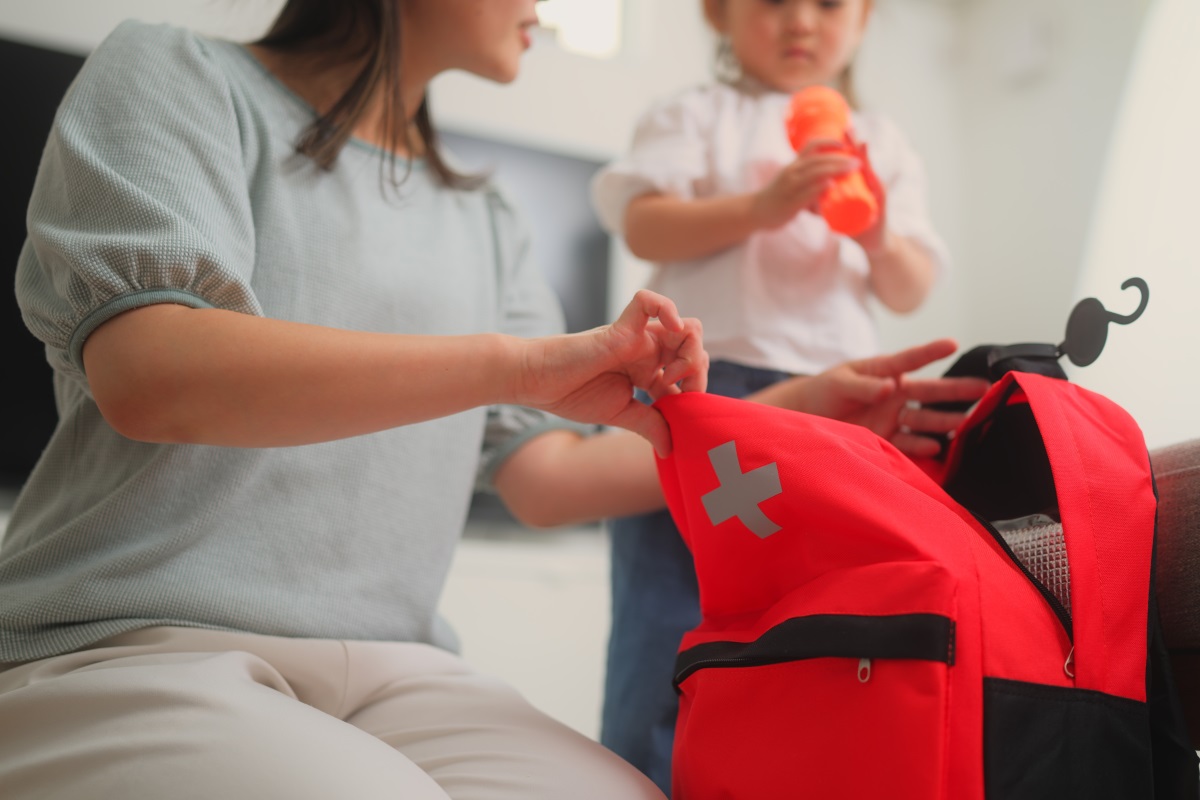
First aid for minor cuts
Using sharp kitchen objects like knives and graters means accidents are bound to happen. For minor cuts and wounds, remember to STOP, WASH and COVER:
STOP the bleed. Apply firm, direct pressure over the wound. Hold this pressure for at least a few minutes, or until the bleeding has slowed or stopped.
WASH the wound under running tap water once the bleeding has slowed or stopped. No need for antiseptic lotions or creams either- tap water is best!
COVER the clean wound with a sterile dressing.
First aid for burns
More than half of all paediatric burns occur in the kitchen. Prevention is always best, but if your child (or you!) suffers a burn, remember to REMOVE, COOL, COVER and SEEK:
REMOVE the danger or burn source from your child. Remove any clothing or jewellery around the burn. If clothing is stuck to the burnt skin, leave the clothing in situ and cut around it.
COOL the burn under running tap water, for at least 20 minutes.
COVER the burn with cling wrap.
SEEK medical advice if the burn is:
- On the hands, feet, face or genitals
- Larger than a 20-cent coin
- Is blistering
By incorporating these safety measures and knowing basic kitchen first aid, you can help ensure that your little one’s time in the kitchen is both fun and safe. Happy cooking!
For more information:
